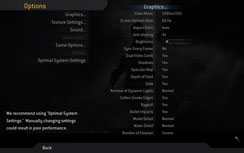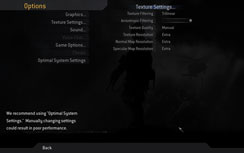Call of Duty 4: Modern Warfare
Publisher: ActivisionCall of Duty 4: Modern Warfare is different to all previous Call of Duty games, as it moves the action out of the World War II era and into the modern day. We have used the full version of the game with the 1.4 patch applied.
The game runs on a proprietary engine, which includes features like true world dynamic lighting, HDR lighting, dynamic shadowing and depth of field. Unlike most triple-A games that were launched late in 2007, Call of Duty 4: Modern Warfare only uses a DirectX 9.0 renderer and, given the realistic nature of the graphics, it proves that there's still life left in the old dog!
For our gameplay testing, we did a 90 second manual run through in the second mission of the game. All of the in-game settings were set to their maximum values, including texture details which were configured to 'Extra'. The 'Dual Video Cards' option was enabled for the Radeon HD 3870 X2 and Radeon HD 3870 CrossFire configurations, but was disabled in all single GPU configurations.
Finally, anti-aliasing and anisotropic filtering were controlled from inside the game.
What we see in Call of Duty is that the GeForce 8800 GT is really limited by pixel fillrate and memory bandwidth because, once anti-aliasing is enabled, the GeForce 9600 GT closes the gap between the two cards from over 27 to 30 percent to just over 10 percent. Nvidia’s GeForce 8800 GS is again limited by memory bandwidth and fillrate, as it performs in line with the GeForce 9600 GT when AA is disabled, but is 17 percent slower once anti-aliasing is applied.
The Radeon HD 3870 and 3850’s anti-aliasing problems showed up here, as the two cards virtually matched the GeForce 9600 GT’s performance with AA disabled, but once it was enabled, the GeForce 9600 GT stretched out a 10 to 15 percent lead over the two mid-range cards from AMD.

MSI MPG Velox 100R Chassis Review
October 14 2021 | 15:04











Want to comment? Please log in.